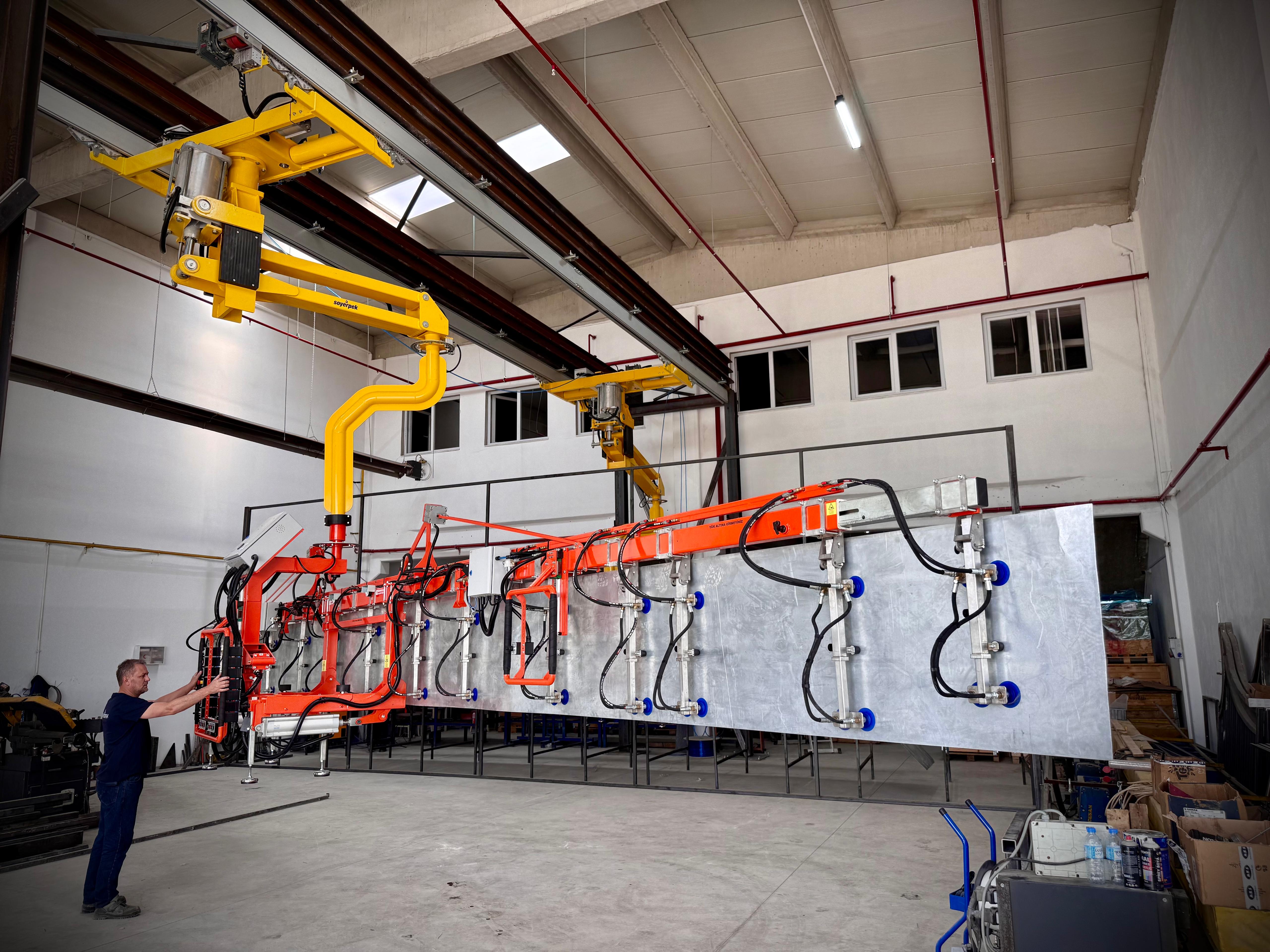Manipulator vs. Crane: Which Should You Choose for Your Operation?
What is the Difference Between a Manipulator and a Crane?
What is the difference between a manipulator and a crane? Manipulators and cranes are both machines used to move loads that cannot be lifted by human power. However, their fundamental differences are: Cranes provide rope/chain-based button-controlled lifting, while manipulators offer precise, oscillation-free, and ergonomic handling with rigid gripping and zero-weight technology.
But what are the fundamental differences between these two concepts? Which machine should be preferred for which operation?
Basic Structure and Operating Principle
Cranes typically consist of a hook attached to the end of a rope or chain structure, and an electric motor-reducer group that drives this structure. Movements are usually provided by button control. While lateral movements can be manually driven, there are also fully motor-driven crane types.
Manipulators, on the other hand, have a gripper mechanism that rigidly grasps the material, and the construction that performs the lifting action is also a rigid structure. The lifting drive is usually based on a pneumatic balancing mechanism, and the operator positions the load as if moving it in a zero-gravity environment.
Both concepts have their own unique set of advantages and disadvantages. Let's examine them below.
Advantages of Manipulators
1. Superior Safety and Oscillation-Free Movement
The biggest advantage of manipulators is that since there are no ropes or chains involved, oscillations and unwanted sudden movements are prevented. Even in lifting processes where the gripping point is far from the center of gravity, the manipulator does not pose any safety risk, and the load remains in the position you leave it the moment you release it. While turning or flipping a load with a crane can lead to extremely risky situations, manipulators are designed to perform these movements safely.
2. Precise Positioning and Operator Control
Another significant advantage of manipulators is that they allow the operator to position the load with high precision. Cranes involve a motor drive that operates in a start-stop manner. Although these starts and stops can be softened with dual-speed buttons and ramps, it is ultimately impossible for them to respond to the fine touches an operator needs for precise assembly. With a manipulator, the operator carries the load as if by hand. The only difference from carrying by hand is that the weight of the material is on the manipulator, not the operator. The operator can pick up a material from one place and put it in another at the desired speed, precision, and smoothness. For example, fixing large parts onto multiple pins on a fixture can only be done with a manipulator.
3. Advanced Safety Systems
Manipulators are equipped with a wide variety of safety measures. High-level safety applications such as safety circuits to protect the environment and people against the operator's unwanted sudden movements, algorithms to prevent the operator from accidentally leaving the product in the air, and extra precautions against air cuts are present in manipulators. This prevents damage to both employees and valuable workpieces.
Disadvantages of Manipulators and the Role of Cranes
1. Lifting Capacity
If we are to talk about the disadvantages of manipulators compared to cranes, the first one we can mention is lifting capacity. While the lifting capacity of cranes is almost limitless, the ergonomics of manipulators decrease as the lifting capacity increases. Therefore, many manipulator manufacturers prefer not to produce manipulators for loads over 1 ton. Since making a manipulator with low ergonomics eliminates most of the elements we count as advantages of manipulators, cranes are generally preferred for high tonnages.
2. Cost in Simple and Rough Applications
Secondly, in simple lifting applications, for example, in processes that can be solved with a simple hook, manipulators can appear as unnecessarily complex and expensive solutions. For this reason, the use of cranes is more appropriate for such simple and rough jobs.
Conclusion: Which Solution is Right for You?
Choosing the right equipment has a direct impact on the efficiency, safety, and cost of your process.
- Choose Manipulators if: Your operation requires precise assembly, rotating or tilting the part, oscillation-free handling, and intuitive operator control.
- Choose Cranes if: You are lifting very high tonnage loads or performing simple, rough, point-to-point transport operations.
Frequently Asked Questions
What are the advantages of using a manipulator instead of a crane?
The main advantages of using a manipulator instead of a crane are: oscillation-free safe movement, precise positioning, ability to safely rotate loads with off-center gravity, intuitive operator control, and advanced safety systems.
What load capacities can manipulators handle?
Pneumatic manipulator and electric manipulator systems typically provide the highest ergonomics for loads between 50 kg and 300 kg. For heavy loads over 1 ton, crane systems are generally preferred. Servo motor manipulators offer precise control for medium to high tonnages.
Which industries use manipulators vs. cranes?
Manipulators are preferred in industries requiring precise positioning such as automotive assembly, precision metalworking, plastic injection, and glass processing. Cranes are commonly used in construction, logistics, and heavy industry where very high tonnage loads are transported.
At Soyerpek, we analyze the specific needs of your application to offer you the most suitable lifting solution. Contact our expert team to find the perfect manipulator solution for your process.

